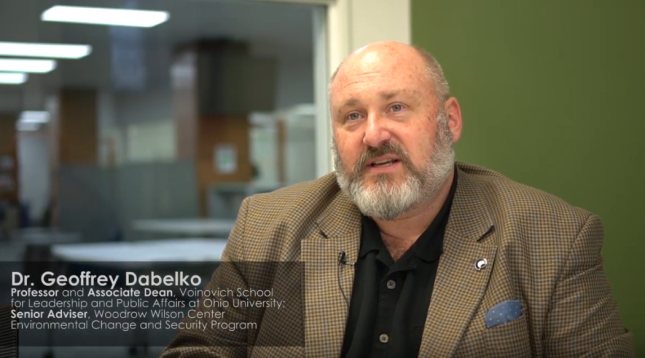-
Environmental Science and National Security: Overcoming Barriers to Connecting Research with Policy
January 31, 2020 By Winter Wilson
Beginning with the end of the Cold War, a relatively small but growing number of scholars began to investigate the connections between environmental change, conflict, peace, and changing notions of security. The recognition of these linkages wasn’t new, but as the heavy weight of superpower confrontation lifted and new foreign policy dynamics unfolded across the globe, an expanded range of research questions and tools emerged.
Thirty years later, the environment and security research arena has expanded even more to include robust research on conflict, peacebuilding, protests, and even assassinations of environmental leaders. The range of environmental issues, relatively limited at first, is more diverse and includes the context of a changing climate.
Despite this growth of topics, methods, and contributors, a question remains. Are there still significant gaps in the disciplinary or topical communities actively engaged in understanding the connections between environmental change and security?
This question is at the heart of a recent effort led by Geoff Dabelko, Professor at Ohio University’s Voinovich School for Leadership and Public Affairs and Senior Adviser to ECSP. With support from the National Science Foundation’s Office of Integrative Activities, members of the Dabelko Research Group assessed the relevance of traditional environmental science to national security communities.
Among many scientists, the presumption is that traditional security institutions are narrowly focused on issues of war and peace with few connections to disciplinary environmental science research. To interrogate this assumption, Dabelko engaged three distinct communities—environmental scientists, national security practitioners, and applied environment and security researchers. While initially focused on a more narrow and traditional conception of security, participants from all three groups consistently pushed for a wider security lens. Over the course of the project, a number of takeaways emerged. (See video below)
Reconcile the timelines of research-driven environmental science and fast-changing security landscapes: There is a common misconception that research-driven environmental science is not connected or relevant to the fast-changing world of security, where actors are regularly responding to near-term crises.
Many outside of the security community assume it to be homogenous and exclusively focused on the use of force. Yet senior security practitioners made clear that the security world is actually many communities that contain a plethora of cultures, concerns, and tools. While many environmental scientists are not engaged in dialogue with security institutions, there are research endeavors—often funded by traditional federal science funding institutions—that have resonance with security actors. “The questions that are of interest and concerns of interest to national security practitioners go far beyond questions of war and peace in today’s crises,” says Dabelko.
Sustain environment and security applied research: While not without methodological limitations, this often interdisciplinary work has proven to be of value to security practitioners. Yet environment and security research to date has been primarily grounded in the social sciences or interdisciplinary approaches that meaningfully include the social science. These areas receive just a small fraction of the public funding devoted to environmental science research and grant support tends to be short-term and project specific. As a result, foundation and contracted research—where research questions are largely predetermined and long-term research infrastructure investments are less common—make up a higher proportion of funding sources for explicit environment and security research.
Overcome impediments to environmental scientists’ engagement with security practitioners: Such interactions are not for all scientists, and are often outside of the boundaries of what scientists know how to do, want to do, or are incentivized to do. For scientists who do want to engage across sectors, participants identified the relatively modest cost of tailored platforms as a worthy investment—platforms where these communities can connect to exchange research and engage in productive dialogues without fear of influencing each other’s agendas or introducing (real or perceived) transactional interactions.
Looking into the future, Dabelko notes the importance of identifying sustained funding streams for research that connects these communities. “We will continue to facilitate greater exchange among these worlds, often dropping down to specific topics and geographies where security actors have practical questions, and scientists may have more relevant insights than they realize,” he says.
Winter Wilson is a senior double major in Environmental Studies and Journalism in the Honors Tutorial College at Ohio University, and is a current Voinovich Scholar with the Dabelko Research Group.
Sources: Ohio University, Dabelko Research Group, Oregon State University
Photo credit: Still from footage by Winter Wilson.
 A Publication of the Stimson Center.
A Publication of the Stimson Center.



